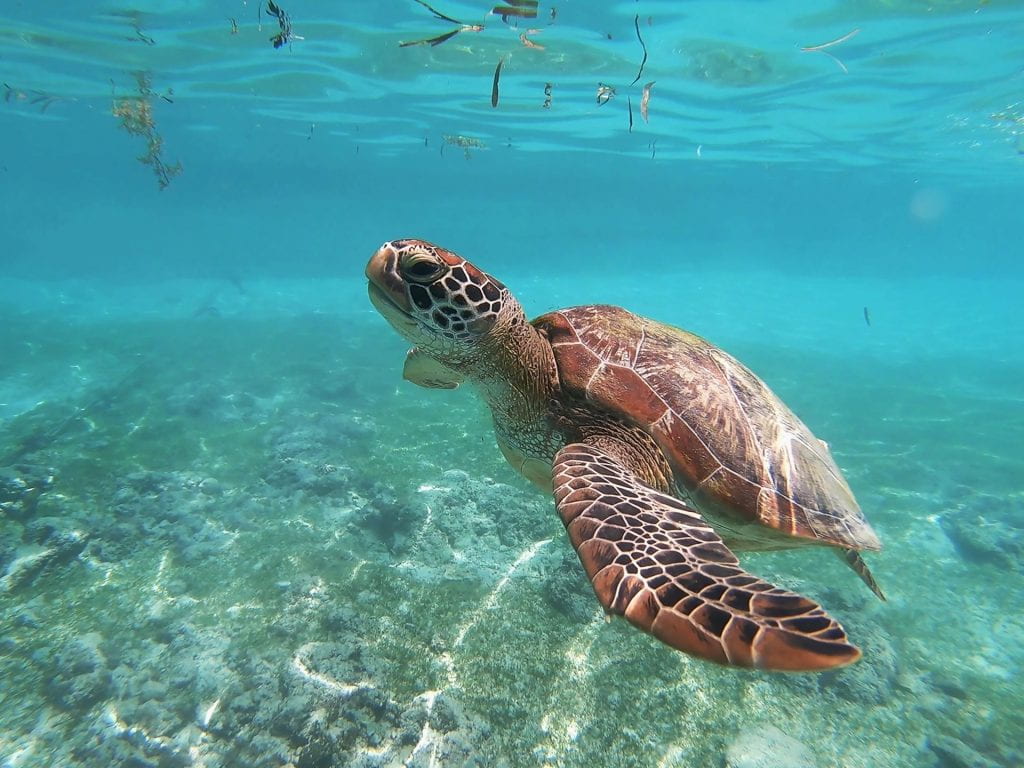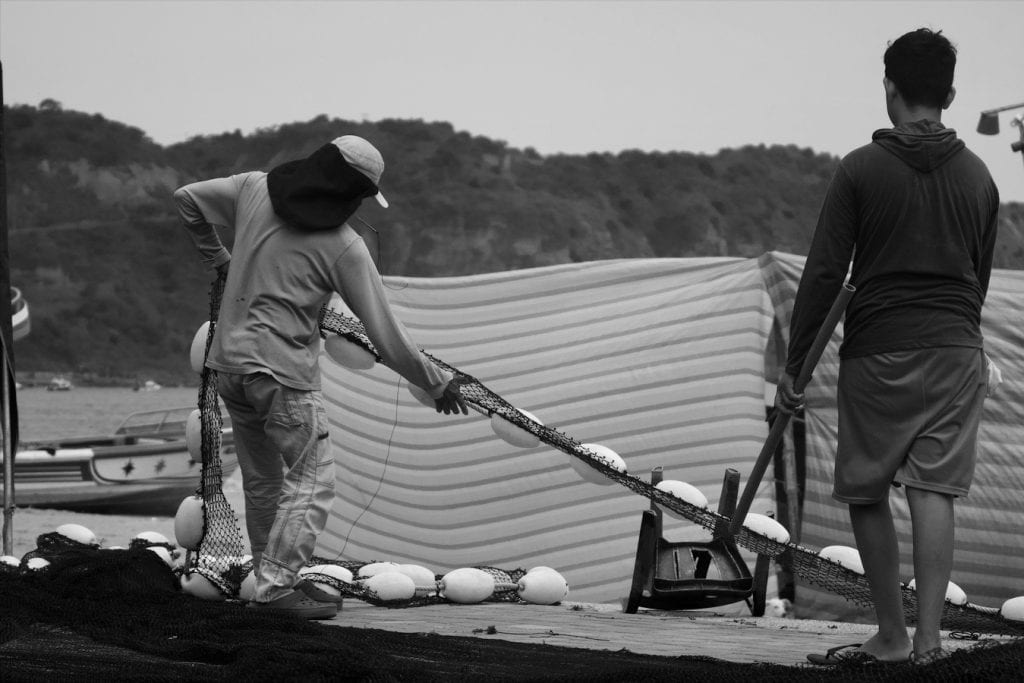Written by guest contributor and WashU class of 2018 alum, María Dabrowski
One day during my junior year at WashU, I found myself lying in bed and wondering (for
the 18th time that month) if maybe I should be pre-med after all. Despite barely passing
chemistry, physics, and calculus, I convinced myself that the trajectory all my peers
seemed to be on was my destiny as well. I was a cognitive neuroscience major, and
while passionate about the brain and the mind, lab work was driving me up the wall (as
my poor roommates could attest). I did not have the patience to count cells and have
my experiments fail – again. In typical 20-year-old angst, I lay in bed and opened
Instagram to while the hours away until I had the energy to open my neuroscience
textbook once more.
I found myself emotional twenty minutes later, but for a different reason. I had just
watched the then-viral video of a scientist pulling a straw out of a sea turtle’s nose.
Something deep inside me dislodged and exploded and I found myself, a few months
later, volunteering for a sea turtle conservancy in Costa Rica. I realized that while I
would always be fascinated by the brain, sea turtles and ocean conservation were the
reasons I wanted to get out of bed in the morning. Imagine my parents’ thrill when I told
them that I had been studying the wrong subject all along!
Post-WashU graduation was a wending rollercoaster to today, which included: working
for a small non-profit organization and starting a beach cleanup campaign for them;
creating a science communication Instagram page; discovering birding and scuba diving
as deep passions; attending the University of Michigan’s School for Environment and
Sustainability for graduate school; writing a thesis about artisanal Ecuadorian fishers’
perspectives on ocean conservation; and finally, landing a dream job at the Center for
Behavior and the Environment at Rare.
I realized that… sea turtles and ocean conservation were the reasons I wanted to get out of bed in the morning.
How I got here, to this juncture of behavior change and conservation, began at WashU.
Now that I’ve shared my very non-linear background, I would like to explain why I’m a
firm believer that many solutions to global issues lie with understanding and
implementing behavior change initiatives.
The Problem: Climate Change and Biodiversity Loss
The climate and biodiversity crises are evil twins, each trying to outdo each other with
sobering weekly statistics and horror stories. Social and traditional media seem to glom
on to the gloom. Left unchecked, the focus on hopelessness and the rhetoric that
humans are inherently “problematic,” being intent on living out of harmony with nature,
seems to be going in one of two directions.
On the one hand, there is the burnout. Eco-anxiety, or the fear related to environmental
and/or ecological destruction, had 70% of Americans feeling worried about the state of
the planet in 2018. Compounded worry can lead to pervasive feelings of helplessness,
hopelessness and apathy. That does nobody – neither those struggling under the weight
of anxiety or the planet itself – any good.
On the other hand, inundation by terrible news about everything happening on the
planet can lead to denial. A very recent study found climate denialism is resurfacing on
social media with force. Between trending hashtags like #ClimateScam, inane
“celebrities” proudly polluting (and then getting taken down by Greta Thunberg), and
intentional greenwashing campaigns (i.e. campaigns that falsely or deceivingly purport
that an organization is engaging in environmentally-friendly behaviors to increase sales
and public support), disbelievers in human-caused climate change loudly advocate their
positions.

Despite what climate change deniers will have you believe, there is no scientific doubt
about it: anthropogenic climate change and massive biodiversity loss are happening.
There are victories, to be sure (and you can read some here). But things are inevitably
going in the wrong direction.
So what do we do? Educating about climate change and biodiversity loss is necessary
but not sufficient; in fact, informing without providing solutions is actually a driver of eco-
anxiety. Financial incentives, like subsidies for electric vehicles and solar power, have
had localized success but issues scaling up. Rules and regulations face public
backlash, legal stays and enforcement limitations. We need to simultaneously be honest
about the bad, highlight the good, and make monumental changes to how we function
as individuals and within systems. The science of behavior change offers a plethora of
solutions.
Behavior Change: What Is it?
Behaviors are, simply put, our actions. Behaviors include what we do, or what we do not
do. They are influenced by many things – the values we hold, the attitudes we develop,
our understanding of systems and people around us, social influences, extenuating
circumstances. For that reason, changing behavior is not as simple as flipping a switch.
It is why education alone can be insufficient (e.g. “I know I should eat more plant-based
meals, but vegetables are not available in my area”), why regulations can fail (e.g. “I
don’t know why I have to change my ways if other people aren’t”) and why financial
incentives fall short (e.g. “You can’t pay me to change my values and priorities”).
Behavior change, then, is the deviation from what we have been doing and the durable
and sustainable adoption of new habits. Remembering to turn off the lights when you
leave the room once isn’t really a behavior change, but getting in the habit of turning off
lights and unplugging unused appliances each day counts. Behavior change can focus
on smaller tendencies, like using reusable bags at the grocery store. It can also focus
on newer and more impactful habits, like choosing to divest from gas and oil and invest
in only renewable energy.
More challenging to consider is not what behavior change is, but how to foster it.
Change, from systemic measures to individual actions, requires a holistic approach.
Some questions to consider:
- How is this initiative to change behavior being framed? Who wants this change to occur? Who is the change occurring for? Who is the change occurring to? Is there any disconnect between those groups?
- What physical, mental or historical barriers exist to a behavioral change occurring? What needs to be rectified before behavior change initiatives can occur? What are the priorities of the individuals and/or systems involved, and are they in line with the proposed changes?
- How does motivation play a role in behavior change? Can other emotions be employed to engender support? How do culture, religion and/or spirituality influence motivation?
- How can this change be lasting? What are some potential future obstacles? How can we encourage future generations to become involved?
(This is a very incomplete set of questions – for more, I encourage you to check out the resources at the bottom of this post.)
A Solution to Conservation and Climate Change?
Behavior change, in definition, can be simple. In implementation, it becomes more complex. With climate change and biodiversity creating vastly overwhelming problems as it is, logic wouldn’t follow to change something as convoluted, variable and multi-faceted as behavior. Right? Nope. On the contrary, science shows behavior change initiatives both work and are vastly underutilized (though rising in popularity). This isn’t true just for environmental stuff – fields like public health are catching on, and marketing and economics have been studying (and capitalizing on) human tendencies for decades. The better question is how to thoughtfully and intentionally create effective behavior change initiatives. The
answer lies in research and models (a scientist’s favorite things!).
Models direct and guide us. My favorite model, and I readily admit my bias, was created
by my colleagues at Rare’s Center for Behavior and the Environment (and it’s listed
below in the resources). The eight-step model offers a path to creating a behavior-
centered intervention. Steps include framing the problem, understanding the role of
empathy and other diversity, equity, inclusion and justice considerations, and evaluating
the intervention and fine-tuning future iterations. It’s called the behavior-centered
design model and combines social science, behavioral science and design elements.
This model’s principles, as well as a primary and intense focus on listening to and
putting community needs first, has led to Rare’s incredibly successful behavior change
initiatives. I first heard about Rare because of their Fish Forever program. This program
uses elements like public pledges, locally-led resource management, empowering
technology, and community-based norms to revitalize coastal communities across the
world. As a result, fish stocks have risen, bycatch has decreased, community bonds
have strengthened and income has stabilized where the program has been
implemented. A focus on behavior is behind other current Rare programs, including the
Climate Culture Index, Colombia’s Lands for Life initiative and China’s Pride on Our
Plates campaign.
Imagine this: to conserve non-human animals, we focus on humans. This notion may
seem abstract to Western societies, as we like to point fingers and have villains to
vanquish in the quest to planet-saving heroism. In fact, when I first saw the straw-in-
turtle-nose video, I think I said something like, “Wow. I hate all humans.” (It is critical to
note that humans as part of ecosystems, just like any other living and nonliving entity,
has been and continues to be a way of life for many Indigenous communities around the
world – see this piece by Douglas Sanderson or this one by Enrique Salmón.)
Focusing on human behavior, and the elements which make change either possible or
improbable, is one of the most important tools we have in combating anthropogenic
climate change and biodiversity loss. It’s up to behavioral scientists and practitioners to
make these concepts easily accessible and digestible to those around us. It’s also up to
us to focus on realistic optimism. Without that, this journey is a lot harder. We might
need stark videos, images and statistics to jolt us into reality, but we need rational hope
and a focus on the humble power of behavior change to keep us fighting for this planet
and all upon it.
Further Resources:
- 8 Steps to Behavior Centered Design (Center for Behavior and the Environment, (Rare))*
- Eight Principles for Effective Climate Communication (Center for Behavior and the Environment (Rare), Behavioral Insights Team and Potential Energy Coalition)*
- Six levers of behavior change (Center for Behavior and the Environment (Rare))*
- What Is Behavior Change in Psychology? 5 Models and Theories (Celestine, 2021)
- Why facts don’t change minds: Insights from cognitive science for the improved communication of conservation research (Toomey, 2023)
- A Collection of Ecuadorian Artisanal Fishers’ Perspectives on Ocean Conservation (Dabrowski, 2022)
- The Process of Eco-Anxiety and Ecological Grief: A Narrative Review and a New Proposal (Pihkala, 2022)
- What Conservation Efforts Can Learn from Indigenous Communities (Sneed, 2019)
- How Hope and Doubt Affect Climate Change Mobilization (Marlon et al., 2019)
- Participation, not penalties: Community involvement and equitable governance contribute to more effective multiuse protected areas (Fidler et al., 2022)
- Decade on restoration needs behavioural science (Cerullo & Nielsen, 2022)
*To access these and many other valuable resources, you’ll have to make a free account on behavior.rare.org
All views presented here are my own and do not necessarily reflect those of Washington University in St. Louis, the University of Michigan School for Environment and Sustainability and/or Rare and Rare’s Center for Behavior and the Environment.
